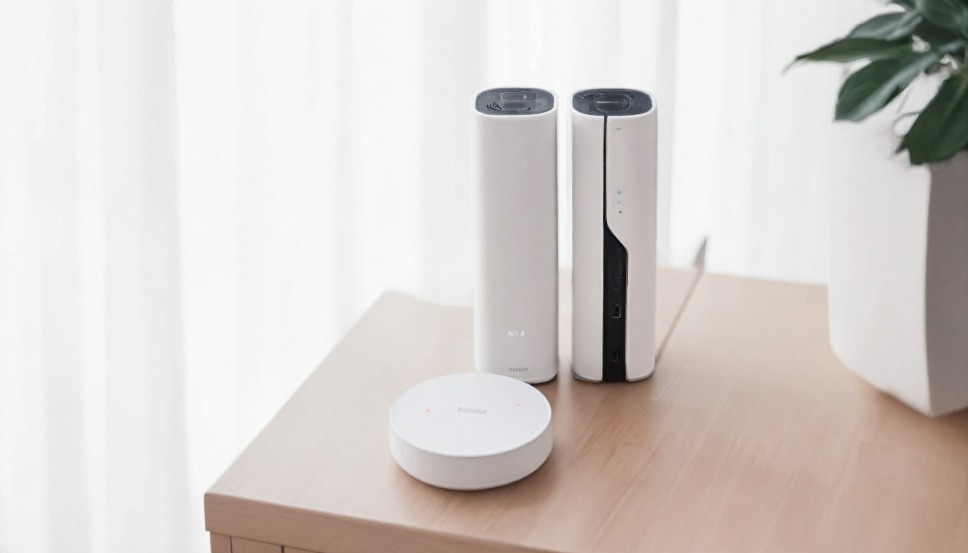Mesh Wi-Fi systems have become a popular solution for those seeking reliable, high-speed internet throughout large homes or offices. Unlike traditional routers, which often fail to provide consistent coverage in larger spaces, mesh systems use multiple interconnected nodes to create a seamless, unified network. Below is a detailed guide to understanding mesh Wi-Fi, its benefits, and how to select the best system for your needs.
Understanding Mesh Wi-Fi
A mesh Wi-Fi system consists of a primary router connected to your internet modem and additional nodes (also called satellites) spread across your property. These nodes communicate with each other to extend the signal and ensure reliable Wi-Fi coverage in every corner of your space.
How Mesh Wi-Fi Works
- Primary Router Connection: The main router is connected to your modem, acting as the central hub of the network.
- Node Communication: Additional nodes are placed throughout the home or office to increase coverage. These nodes communicate wirelessly with the main router and each other.
- Seamless Roaming: As you move throughout your space, your device automatically connects to the nearest node without interrupting your connection, offering a smooth browsing or streaming experience.
Key Features of Mesh Wi-Fi Systems
- Unified Network: All nodes broadcast the same network name (SSID), so you don’t have to manually switch networks as you move around.
- Scalability: Adding more nodes can easily extend the coverage to large homes or multi-story buildings.
- Self-Healing: If a node fails or disconnects, the system automatically reconfigures itself to ensure continuous coverage.
- Ease of Setup: Most systems offer easy setup through mobile apps, allowing users to configure their network quickly.
Benefits of Mesh Wi-Fi
- Enhanced Coverage: Mesh networks eliminate dead zones by providing consistent coverage across the entire area.
- Improved Performance: Multiple nodes help ensure your devices connect to the nearest node, reducing latency and improving speed.
- Better Management: Many mesh systems come with advanced features like parental controls, guest networks, and traffic prioritization for better network management.
- Aesthetic Design: Mesh Wi-Fi nodes often have sleek designs that blend with your home décor, unlike traditional routers with bulky antennas.
Top Mesh Wi-Fi Systems for 2024
- Asus ZenWiFi AX (XT8): A Wi-Fi 6 system with a range of up to 5,500 sq. ft., offering strong security features and parental controls.
- Netgear Orbi 960: Known for its Wi-Fi 6E support, the Orbi 960 is ideal for large homes and delivers fast speeds.
- TP-Link Deco XE75: This tri-band Wi-Fi 6E system is perfect for streaming and gaming due to its high-speed connectivity.
- Eero 6+: A budget-friendly option that’s easy to set up and doubles as a smart home hub.
- Linksys Velop Pro 7: The Velop Pro 7 is future-proof, supporting the latest Wi-Fi 7 technology and offering extensive coverage.
Choosing the Right Mesh Wi-Fi System
When selecting a mesh Wi-Fi system, consider the following factors:
- Coverage Area: Ensure the system covers the required square footage. Larger homes may need systems like the Netgear Orbi 960.
- Speed Requirements: Match the system’s capabilities with your internet speed and bandwidth demands, especially if you stream high-quality content or game online.
- Device Compatibility: Make sure the system supports all your devices, including smart TVs, smartphones, and IoT devices.
- Additional Features: Some systems offer enhanced security, traffic management, and guest networks, such as the Asus ZenWiFi AX (XT8).
Setting Up a Mesh Wi-Fi System
- Unbox and Position Nodes: Place the main router near your modem and place additional nodes around your space for maximum coverage.
- Connect the Main Router: Use an Ethernet cable to connect the main router to your modem.
- Configure the Network: Follow the setup instructions in the mobile app to configure the network name and password.
- Add Additional Nodes: Using the app, add other nodes by scanning QR codes or entering unique identifiers.
- Optimize Placement: Use the app’s signal strength indicators to ensure nodes are placed optimally for best coverage.
Maintenance and Optimization Tips
- Keep Firmware Updated: Regularly update your system’s firmware for improved security and performance.
- Adjust Node Placement: Move nodes if you notice coverage or performance issues.
- Use App for Management: Monitor connected devices, prioritize traffic, and manage the network efficiently via the app.
- Security Measures: Enable WPA3 encryption and change passwords regularly to protect your network.
Mesh Wi-Fi and Smart Homes
Mesh Wi-Fi systems integrate seamlessly with smart home ecosystems, providing reliable connections for all your IoT devices:
- Unified Control: Manage all connected devices from a single app, integrating with Alexa or Google Assistant.
- Enhanced IoT Support: Ensure your smart home devices, such as thermostats, cameras, and lights, stay connected without interruptions.
Modern Use Cases
Mesh Wi-Fi systems are versatile and cater to various environments:
- Large Homes: Ideal for big homes or multi-story buildings that require extensive coverage.
- Home Offices: Ensure stable connections for remote work, video conferencing, and online collaboration.
- Entertainment and Gaming: Enjoy lag-free streaming and gaming with high-speed mesh systems like the Asus ROG Rapture GT6.
- Outdoor Areas: Extend your Wi-Fi coverage to gardens or patios by positioning nodes strategically.
Final Verdict
Mesh Wi-Fi systems offer a robust, scalable solution for ensuring reliable, high-speed internet coverage throughout your home or office. With features like seamless roaming, ease of setup, and self-healing capabilities, mesh systems outshine traditional routers, especially in large or multi-story buildings. As technology evolves, we can expect even more advanced features, making mesh Wi-Fi systems essential for modern digital living.






